Pimples on the scalp, and especially in men on the back of the head, often bother them from an aesthetic point of view. This is actually a medical problem. Unpleasant rashes cause itching and discomfort when washing your hair. However, the main problem is that they cause excessive hair loss and lead to baldness. Why do acne appear on the back of the head, and how to deal with this problem? This is what this article will discuss.
Skin structure
The skin of an individual consists of several layers:
- The epidermis is the uppermost one, it is constantly renewed. Some cells die and are exfoliated, while others appear again.
- Dermis – average. It contains small blood vessels, capillaries, sebaceous and sweat glands, hair follicles and nerve endings.
- Hypodermis – internal. It is responsible for thermoregulation of the skin and accumulates nutrients.
The sebaceous glands produce a secretion to lubricate the hair and form an emulsion hydrolipidic film on the surface of the skin. It has a slightly acidic environment, which prevents the proliferation of microorganisms, regulates the water-salt balance, protects the epidermis from drying out and protects the skin from ultraviolet rays. When it is damaged, harmful bacteria freely penetrate the dermis and cause acne to appear on the back of the head in men.
Types of skin rashes on the head
In medical practice, skin pimples are called acne. All rashes are classified according to the following types:
- Papules are a red bump without pus. After removal it leaves no traces.
- Pustules - a white dot is visible on a reddened pimple - an accumulation of pus. Such acne occurs when an infection occurs.
- Nodules are a dangerous type of pimple, they are red in color with a burgundy or blue tint, affect all layers of the skin, cause pain and reach up to three centimeters in diameter.
- Cysts appear one after another, merging into a single chain. After healing, they leave scars and scars.
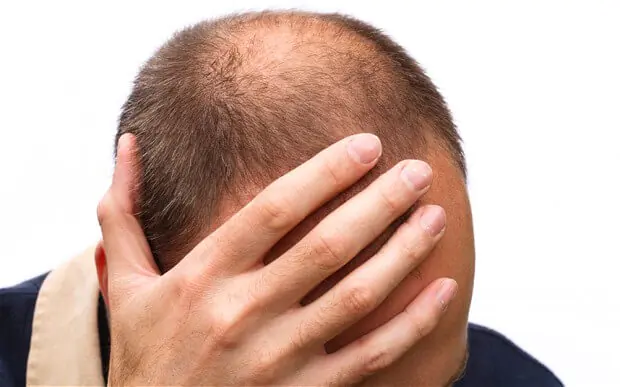
You should not self-medicate, and if acne appears on the back of your head, you should immediately consult a dermatologist. External manifestations can signal serious internal problems.
Internal causes of acne
Acne appears not only on the face and back, but also on the scalp. They begin to itch and cause serious discomfort. Their formation signals serious problems in the body. You should, without delay, contact a dermatologist, trichologist or gastroenterologist and undergo an examination.
Pimples on the head occur for the following reasons:
- Malfunction of the endocrine system. The body produces excess testosterone or progesterone and a deficiency, for example, of estrogen. This occurs during adolescence during puberty or when sexual function decreases in men.
- Excessive secretion of sebaceous glands. Pores become clogged, oxygen supply to the skin is disrupted, and acne appears.
- Adrenal gland disease. Everything in the body is interconnected, and the occurrence of problems in one organ leads to problems in the functioning of other systems.
- Focal infection. The presence of harmful bacteria in the body weakens the immune system, and pathogens begin to multiply under favorable conditions on the scalp, causing acne to appear on the back of the hair.
- Stressful situations and overwork. They promote increased production of cortisol, which disrupts metabolic processes in the epithelium, which reduces collagen levels.
- Deficiency of vitamins and microelements.
- Various diseases of the digestive system.
- Dermatological diseases: mycosis, folliculitis, seborrhea, psoriasis.
- Allergic reaction of the body to various foods.
- Long-term use of medications - steroids, antibiotics.
Pimples on the back of the head in men: reasons for their appearance
There are many external reasons that contribute to the appearance of acne on the scalp. These include:
- Unsuitable water type. A high content of various impurities in water or chlorine irritates and dries out the skin.
- Poor hair and scalp hygiene. Rare or, on the contrary, frequent hair washing, incorrect selection of shampoo, not washing the scalp from sebaceous secretions. Some products cause individual intolerance, and this can cause acne on the back of the head in the hair.
- Using synthetic bedding or headwear. The skin is not saturated with oxygen, severe sweating and blockage of the sebaceous glands occurs.
- Poor environment, working with various harmful substances.
- Microcracks and scratches into which pathogenic bacteria enter.
- Sudden temperature changes. In cold and hot seasons it is necessary to wear a hat.
When eliminating acne, you should not self-medicate. To successfully combat acne on the back of the head, the cause of its appearance plays an important role. Only a qualified specialist can accurately determine it and prescribe the correct treatment.
Symptoms of scalp inflammation
Before acne appears on the head, the individual experiences dry skin and itching. After several days of discomfort, bumps appear between the hairs, ranging in color from pale pink to dark red. Their diameter can vary from 1 mm to 3 cm, and pain appears. As it matures, purulent pimples form on the back of the head, which can also appear on other parts of the head. Sometimes the swelling goes away on its own after a few days, without forming an abscess or leaving any traces.
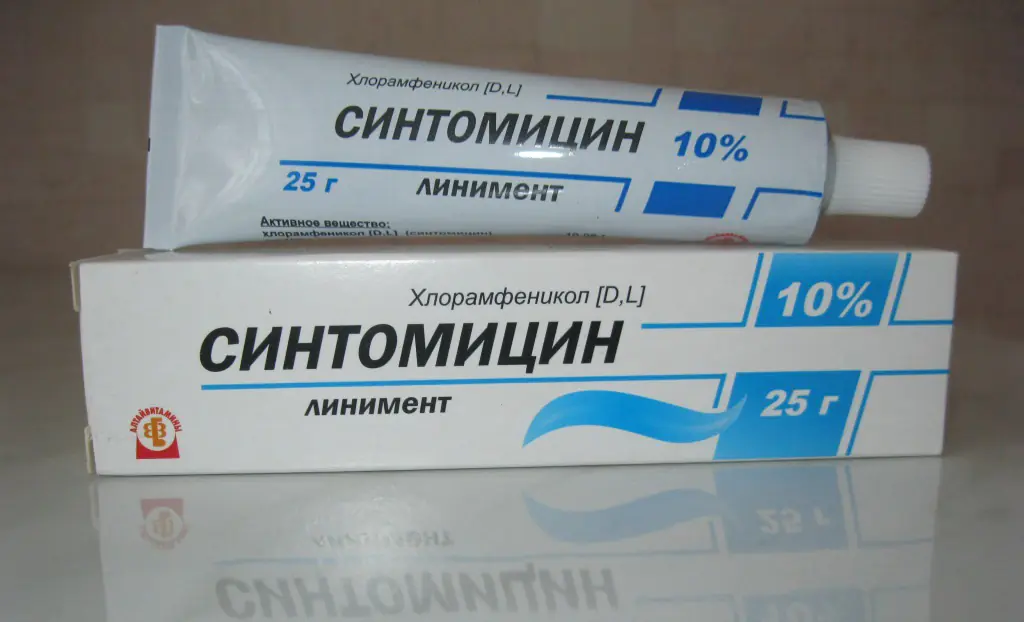
Individuals prone to the formation of an inflammatory rash need to constantly monitor the edges of the hair near the neck, forehead, temples, and examine the back of the head. If you notice the first symptoms, contact a dermatologist or trichologist. Advanced forms of the disease are difficult to treat and lead to hair loss and bald patches.
How to get rid of acne on the back of your head?
The appearance of acne on the back of a man's head can be caused by many reasons. It is recommended to start the treatment process with the following points:
- Make changes to your diet. Review the daily menu, add to it a sufficient amount of foods containing microelements and vitamins: various greens, vegetables, fruits, nuts, cereals and dairy products. Significantly reduce the consumption of smoked meats, fatty meats, canned food, spicy and salty foods.
- To refuse from bad habits. Nicotine and alcohol negatively affect the effectiveness of treatment.
- Eliminate allergen. It can be found in shampoos, conditioners, medications and foods.
- Visit your doctor if the measures taken do not improve your condition. After the diagnosis, the doctor will prescribe effective therapy.
Doctors' advice to help fight acne on the head
Dermatologists advise to combat acne on the back of the head in men:
- Choose the right hair hygiene products. Shampoo for men, which contains salicylates, dries the scalp and promotes the healing of purulent pimples. Preparations containing selenium sulfide help eliminate itchy rashes. Anti-fungal additives in hair washes cure dandruff. Tar shampoo or soap will cope with the symptoms of seborrheic dermatitis.
- Use hair styling products carefully. They cause the scalp to become dry or, conversely, oily, and the pores become clogged. All this contributes to the appearance of dandruff, itching and rashes.
- Get short haircuts. It is easier to maintain a healthy scalp with short hair. Long ones increase sweating, provoke the growth of bacteria, cause inflammation and acne.
- Do not squeeze pimples - you can cause the infection to spread extensively to new areas of the scalp. Serious complications are possible.
Diagnosis of the disease
Before making a diagnosis, the doctor identifies the causes of acne on the back of the head in the hair by conducting the following examinations:
- Collecting data for anamnesis - when talking with a patient, the doctor listens to complaints, receives information about the state of health and heredity, about previous treatment experience, if any.
- A visual inspection of the scalp and hair condition is carried out.
- A general blood test is prescribed.
- Blood biochemistry is taken - the content of microelements in the serum is detected, the level of sex and thyroid hormones is determined.
- Computer diagnostics are carried out - trichoscopy, which allows you to obtain complete information about the condition of the scalp and hair.
- If necessary, a phototrichogram is performed to clarify the cause of hair loss.
- Consultations with other specialists are scheduled.
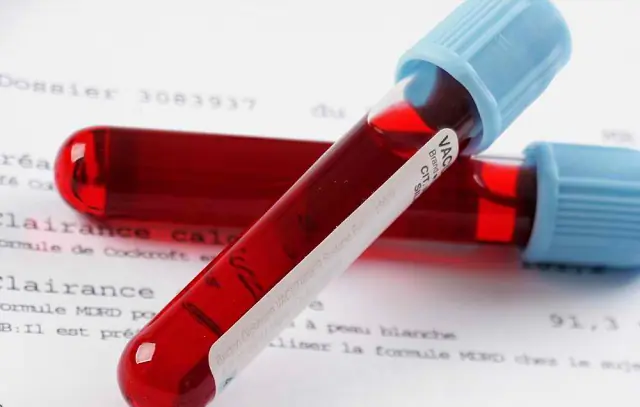
Based on the collected data, it is determined what caused acne on the back of the head and an individual treatment program is developed. During the course of therapy and after its completion, control trichoscopy is performed to evaluate and correct treatment.
Treatment using physiotherapeutic agents
Physiotherapy procedures have a good effect in treating acne on the head. Most often used:
- Ultraviolet irradiation dries, sterilizes and gives an anti-inflammatory effect.
- Microcurrents - low-frequency impulses penetrate deeply into the layer of the epidermis, improve lymph flow and blood flow, nourish cells with oxygen and activate metabolic processes in them. They are used for various inflammatory and fungal diseases, seborrhea, hair loss, and dandruff. They give a good effect for subcutaneous acne on the back of the head.
- Cryotherapy is used to treat low temperatures.
- Galvanization, or vacuum desincrustation, allows you to remove the cores of blackheads.
- Darsonvalization is based on the use of high voltage alternating current. With the help of the procedure, metabolism is accelerated, skin nutrition and oxygen supply are improved, and pathogenic microflora is destroyed.
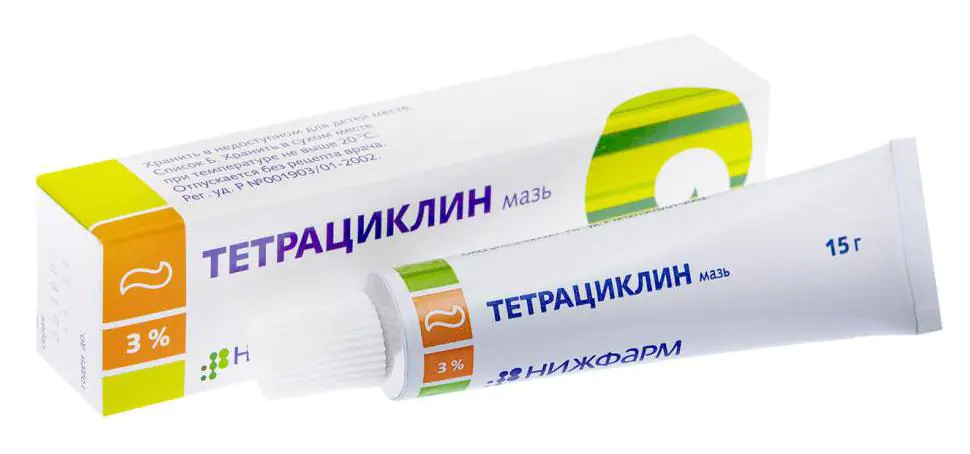
All physiotherapeutic agents have contraindications for use. They are not recommended for various neoplasms, purulent processes, infectious diseases, bleeding tendency, hypertension, cardiac arrhythmia, heart attack and stroke.
Drug therapy
Treatment of acne on the back of the head in men depends on the cause of its occurrence:
- Infection of a bacterial nature - antibiotics “Tetracycline”, “Azithromycin”, “Erythromycin” are used in the form of tablets for oral use and external use in the form of gels, solutions and ointments. In complex treatment, antifungal drugs are also prescribed.
- Gastrointestinal diseases - drugs are used to restore intestinal microflora “Linex”, “Laktovit”, “Laktiale”.
- Allergies - antihistamines are prescribed: Telfast, Loratadine, Zodak. In addition, drugs that normalize the nervous system are used: “Glycine”, “Novo-passit”, “Persen”.
- Hormonal disorders - antiandrogen drugs help. If there is a deficiency of nutrients and microelements, they are replenished with vitamin complexes, brewer's yeast, selenium, calcium, and zinc.
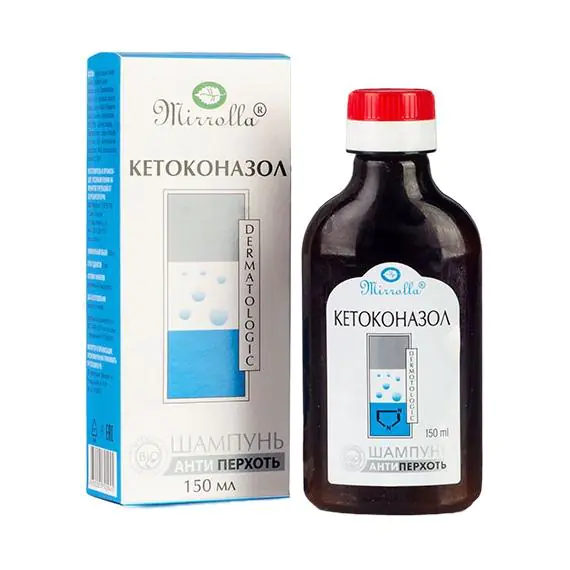
For topical use, ointments such as Ichthyolova, Levomikol, and Boro-Plus are often used. Damaged areas are treated with hydrogen peroxide, camphor and salicylic alcohol. For diseases caused by fungi, it is recommended to use special shampoos “Ketoconazole” and “Nizoral”.
Ointments for acne on the head in the hair
The main disadvantage of ointments when used to treat acne on the back of the head in men is that it is necessary to wash your hair frequently. Despite this, they are considered the most effective remedy in the fight against the disease. The most commonly used ointments are:
- Ichthyol - has an antibacterial effect, perfectly fights ulcers. Apply it an hour before washing your hair. The unpleasant odor is destroyed after using shampoo.
- Salicylic acid – kills pathogenic microorganisms, eliminates the inflammatory process. Use an hour before washing your hair daily. Apply to the abscess.
- Gentamicin - it contains a broad-spectrum antibiotic. Used for bacterial infections. Apply to acne twice a day.
- Syntomycin - prevents the growth of pathogenic microflora, applied directly to acne, has an antibacterial effect.
Traditional medicine recipes for getting rid of acne on the head
When treating acne on the back of the head and other places on the head, you can use traditional recipes along with medications, after consulting with your doctor. To combat the problem, use the following proven recipes:
- Tincture of calendula. Its use helps to improve the functioning of the sebaceous glands. The product is sold at the pharmacy. To use, dissolve two tablespoons of the tincture in a glass of boiled water. Wipe the pimples daily until they disappear.
- Aloe juice. Cut off the bottom leaf from the plant, squeeze out the juice and lubricate the damaged areas of the skin.
- Tea tree oil. A good antiseptic to fight acne. Add a few drops of oil to shampoo and wash your hair. It is not recommended to use it in its pure form; it can cause skin burns.
- Apple vinegar. After washing your hair, rinse your hair with a solution containing water and vinegar in equal quantities.
- Strawberry juice. Squeeze it from fresh berries and lubricate damaged areas of the head. Quickly heals wounds, cleanses the skin, kills pathogens.
- Tar soap. Cleanses the scalp and fights harmful bacteria.
There are a lot of traditional medicine recipes to combat skin rashes on the back of the head and other parts of the head. They should not be used without consulting a doctor, so as not to aggravate the problem.
Preventing acne in hair
It is quite possible to prevent acne rashes on the back of the head in men by adhering to the following recommendations:
- wash your hair no more than once every three days;
- in sunny, windy and cold weather, be sure to wear a hat;
- choose a high-quality cosmetic product that suits your hair type and does not contain oils;
- treat the comb with antiseptic agents;
- wear hats and sleep on bed linen made of pure cotton or linen;
- wash towels and pillowcases more often;
- Do not scratch any pimples that appear.
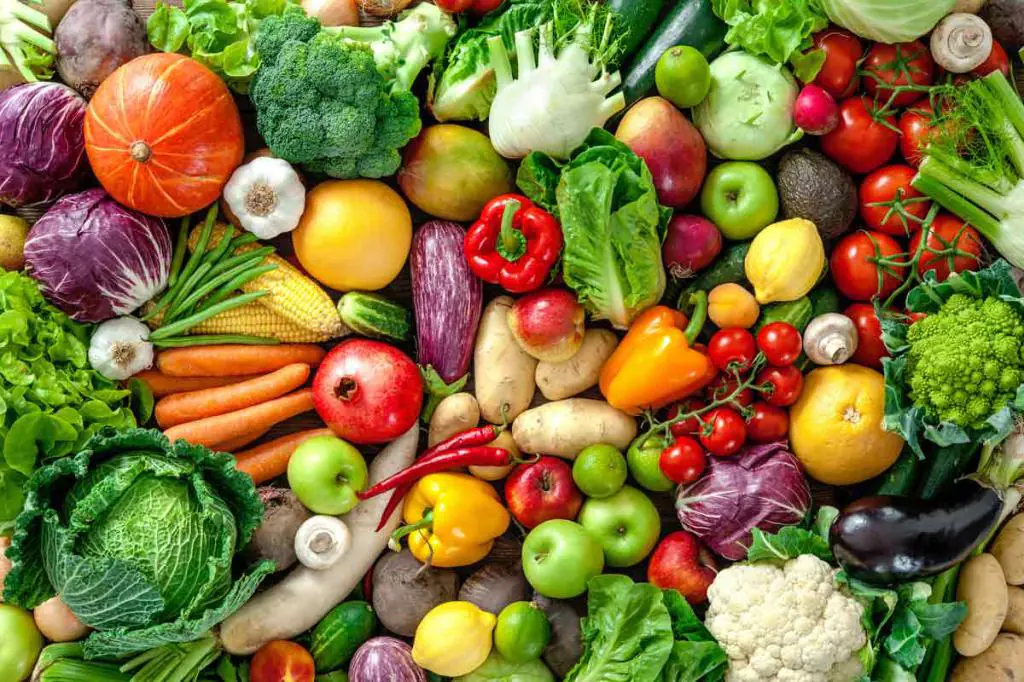
Pay attention to food products, they should contain more proteins, vitamins E, A and B. You should eat less or completely avoid:
- alcoholic drinks;
- sweet confectionery;
- fried, smoked and salty foods;
- fatty meat;
- carbonated drinks;
- coffee.
- fresh vegetables, herbs and fruits;
- various cereals;
- lean meat and fish;
- hard cheeses;
- natural juices and fruit drinks;
- fermented milk products.
In addition, play sports, take daily walks, ride a bike, swim, avoid stress.
Shampoos for acne on the scalp
Using shampoos to treat acne on the back of the head in men is the most convenient method. A simple and quick way to use, does not stain rashes and, with rare exceptions, does not have an unpleasant odor. The following shampoos are suitable for treatment:
- "Skin-Cap" - glyceric acid contained in the drug, has anti-allergic and anti-inflammatory effects. Used for dermatitis, inflammatory processes of the scalp and seborrhea.
- "Nizoral" - used for candidiasis.
- "Sulsena" - contains a substance that regulates the functioning of the sebaceous glands and has an antibacterial effect. Disadvantage: unpleasant odor; advantages: low price.
- “Sebozol” – contains ketoconazole and is used for fungal infections, psoriasis, seborrhea and skin rashes.
- “Friderm Balance” - one of the components is the zinc compound pyrithione, which has an antimicrobial and antipruritic effect. The product is effective for allergic rashes.
- “Tar 911” is an excellent product that contains birch tar, which affects the functioning of the sebaceous glands and prevents the proliferation of harmful bacteria. Used for acne, dermatitis and dandruff.
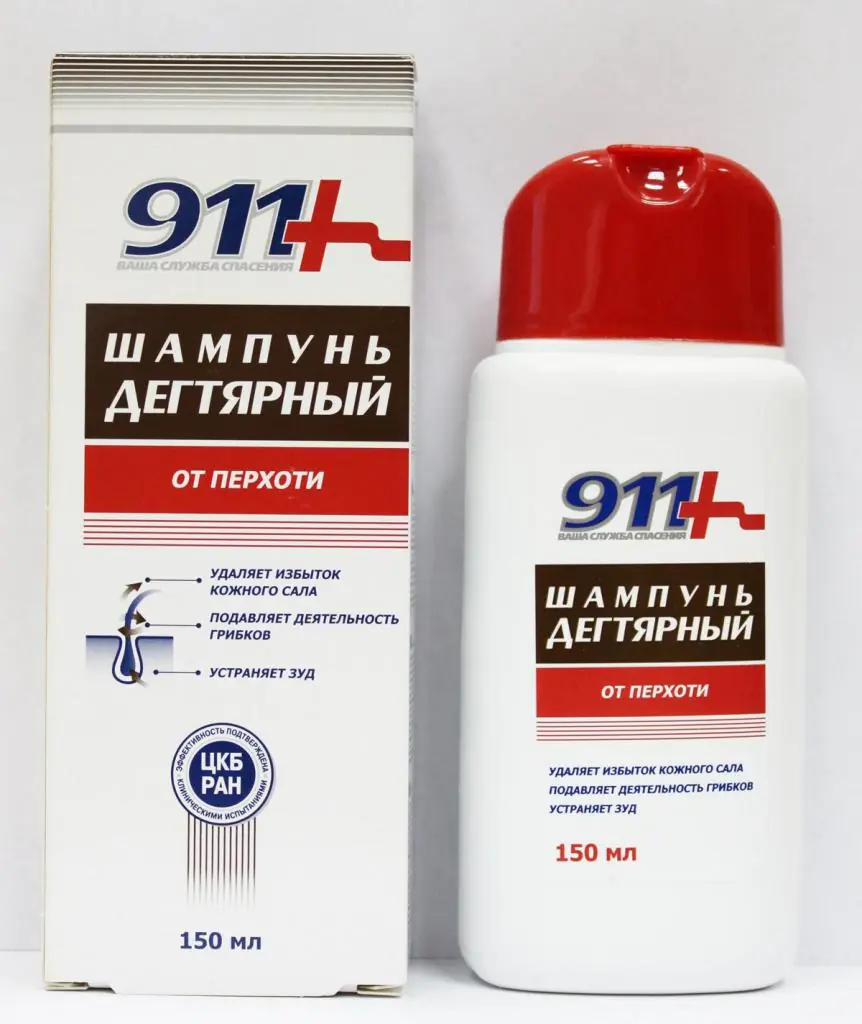
Conclusion
The appearance of acne on the back of the head in the hair of men is most often a dermatological disease. It occurs when the sebaceous glands become inflamed due to excessive production of sebum or its high viscosity. Another cause of the disease is also possible. In each specific case, the doctor will conduct a thorough examination of the patient and prescribe specific individual treatment. Naturally, it is quite understandable why some consider acne on the back of the head to be simply an annoying misunderstanding, and not an illness. However, as we have already found out, such rashes are not always as harmless as they might seem at first glance. Self-medication is never allowed in order not to harm your health and prevent hair loss and the spread of acne throughout the body.
Any rash on the skin is a signal from the body that something has gone wrong somewhere. This kind of inflammation is always painful, especially if acne appears on the head. In men, due to short haircuts, rashes immediately catch the eye. But women, having discovered acne on their heads, should not take it lightly. After reading the article with photos, you will learn what types of skin rashes there are, why they appear, and how you can cure them.
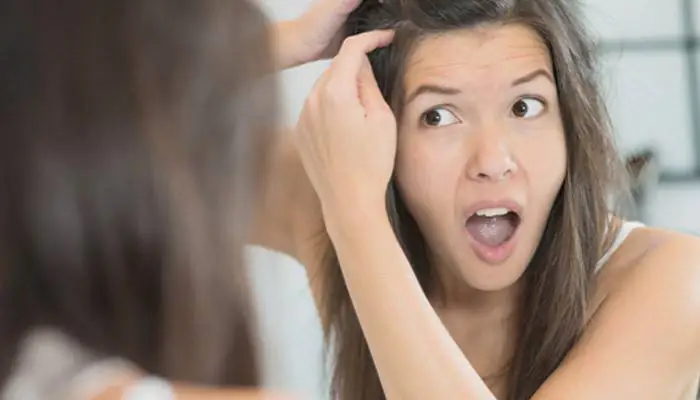
Why do acne appear on the head?
Bacteria that manage to overcome the hydrolipid film, which is one of the layers of the skin and performs a protective function, penetrate into deeper layers and cause inflammation, which manifests itself as acne. The painful discomfort that accompanies even the smallest pimple intensifies when combing your hair. Before you start fighting inflammation on the skin, you need to understand the reasons for their occurrence. They can be very diverse, both internal and external. For convenience, the main causes of acne on the head are divided into several categories.
In adults
- Unstable hormonal levels provoke skin rashes in women, this happens especially often when the menstrual cycle is disrupted.
- A more global cause of female rashes in the form of acne on the head can be polycystic ovary syndrome: when the organ works in an enhanced mode, the oiliness of the skin increases.
- In men, acne on the scalp appears when testosterone levels, a sex hormone, change.
- Frequently occurring stressful situations lead to problems with the adrenal glands, then a failure in the body’s well-functioning system results in acne rashes on the skin in the hair area.
- Taking some medications can cause the body to react in the form of a skin rash.
- With colds and hypothermia, purulent pimples and boils may appear all over the body, including on the head.
- The simple reason for the appearance of acne on the scalp may be trivial, hidden in the wrong choice of shampoo, the composition of which has an individual intolerance.
- Low-quality, highly chlorinated water dries out the skin, the sebaceous glands begin to work hard, and pustular rashes appear in the scalp.
- Using synthetic pillows for night rest. The scalp does not breathe, sweats, inflammation and acne form.
- Very frequent or, conversely, rare washing of the hair.
In children
Young children also suffer from the rash, although most are kept in ideal, clean conditions. In newborn babies, the cause of acne can be the incorrect diet of a nursing mother. Older children, preschool or primary school age, suffer from allergies to certain foods or even toys if they are made from low-quality materials. Parents need to pay very close attention to any changes in the surface of the child’s skin, especially when it comes to rashes in infants.
During adolescence
In girls and boys who have reached adolescence, the appearance of acne is the main problem that is visible to the naked eye. Hormonal surges cause rashes on the face, temples, and the back of the head, accompanied by itching and increased sensitivity. Increased work of the sebaceous glands clogs the space near the hair follicles, causing inflammation. As a result, red or purulent pimples appear.
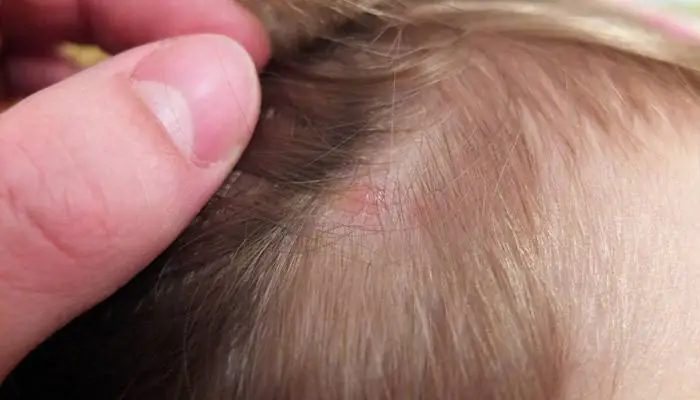
The main types of acne and the reasons for their manifestation
Any person, regardless of age, encounters trouble in the form of rashes. Pimples on the head, different in appearance, have their own distinctive features, which are worth dwelling on in a little more detail. At the first sign that any acne has appeared on your head, you need to pay attention to it and prevent the rash from spreading or worsening.
White pimples
Small white bumps on the skin that resemble small grains are located under the top layer of the skin. Closed comedones, or popularly called “comedos,” occur when the sebaceous glands are blocked by keratinized skin particles secreted by fat and sweat. Under the created plug, bacteria begin to actively multiply, creating a white nodule. This phenomenon of rash often occurs in adolescents, but even in adulthood, it is possible to encounter lumps on the skin that can periodically itch.
Red pimples
When small red spots appear on the skin, it is rarely a cause for concern. Inflammation develops in waves, sometimes intensifying, sometimes subsiding. During an exacerbation, a white purulent tubercle with a thickening under the skin appears in the center of the red pimple papule. Improper metabolism of the body and diseases of the gastrointestinal tract are the main reasons for the appearance of red pimples.
Blackheads
An open comedon has a black head, its structure and reason for its appearance is very similar to a white pimple, but is located in the upper part of the pore. Clogged with a layer of released fat, epithelial remnants, the pore or hair follicle is filled with a white-yellow substance, which, when oxidized under the influence of oxygen, darkens and becomes a black dot. As long as the area with blackheads does not become infected, they do not cause any trouble other than their unsightly appearance.
Purulent rashes
Rashes containing pus always not only look unpleasant, but are also very painful. Deep pimples may have a dense cystic base, then the color has a bluish tint. Red pustules contain a purulent ball inside. The cause of purulent rashes is the use of steroids, hormonal imbalance, or an infection that has entered the pores of the skin. Only a qualified physician after an examination can determine the source of the problem.
Subcutaneous painful nodules
The connective tissue (dermis), located between the hypodermis and epidermis, contains sweat and sebaceous glands, which, when clogged, form dense nodules that are painful to the touch. When bacteria enter the connective tissue, inflammation increases. The large size of pimples on the head indicates that the subcutaneous follicle has already burst and some amount has entered the dermis layer. If your scalp hurts on the top of your head, check to see if a new pimple has started to form there.
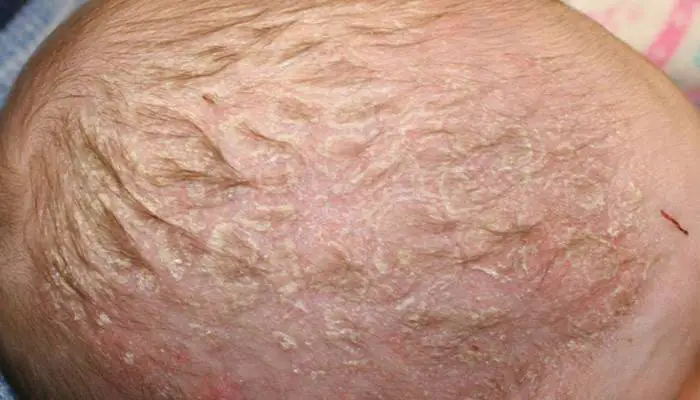
Which doctor should I contact?
When rashes on the scalp appear systematically and cause pain and discomfort, you should visit a professional dermatologist. After conducting the necessary laboratory tests, establishing the cause of the rash, inflammation on the head, the dermatologist prescribes treatment himself or advises seeking advice from an allergist, endocrinologist, therapist, or neurologist. Getting rid of the main cause of acne will speed up the results of properly prescribed treatment.
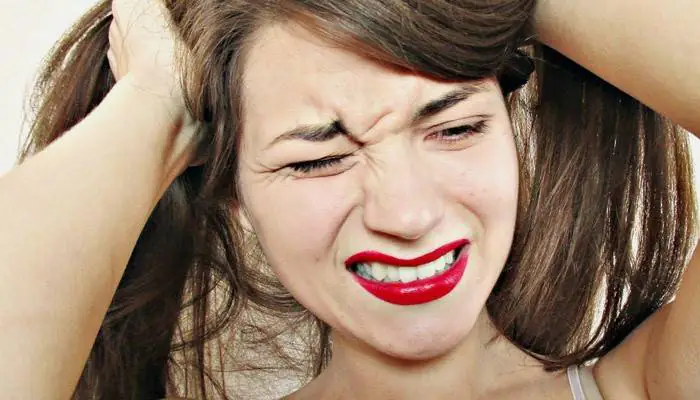
How to get rid of acne on the scalp
How to cure acne that periodically or constantly appears on the part of the head covered with hair can only be determined by a doctor who has a complete picture of the disease and knows the cause of the rash. Self-treatment can lead to worsening of the condition. Combining medication and physiotherapeutic methods gives positive results in the fight against inflammation. Longer treatment gives lasting results after recovery, but subject to the correct healthy diet and proper care for problem skin.
Drug treatment
Treatment with medications prescribed by a doctor against acne should be divided into several groups:
- Antiseptics. The most gentle effect on inflamed skin is antiseptic agents. The disinfecting effect of ointments, suspensions, and gels disinfects the top layer of skin, preventing the appearance of new rashes, thanks to zinc, which is part of some preparations. You need to apply directly to the pimples themselves and a small radius of the skin around them. The list of common drugs includes: “Ichthyol ointment”, “Tsindol”, “Metrogil”, “Kvotlan”, “Skinoren”, “Effezel”, “Aknebay”, calendula tincture.
- Adsorbents. The task of these drugs is to absorb all the toxins from the skin released by acne, start the body's metabolism in an optimal mode, and regulate the functioning of the sebaceous glands. Doctors prescribe Polysorb, brewer's yeast, Laktofiltrum.
- Antibiotics. In more complex cases of skin inflammation, the doctor prescribes medications from the antibiotic group in the form of ointments for external targeted use, such as Levomekol for acne and oral tablets to enhance the radical effect. They also help: ointment “Tetracycline”, “Metacycline”, “Doxycycline”, “Zinerit”, “Baziron AS”, “Erythromycin”, “Clindamycin”, “Monocycline”.
Physiotherapeutic methods
To ensure that the focus of skin inflammation occurs in a comprehensive manner, physiotherapeutic procedures against rashes are prescribed. These include:
- Cryotherapy. Local use of low temperature with liquid nitrogen applied to areas of greater acne accumulation on the skin. Cold treatment helps stimulate blood vessels, improves blood circulation, and activates the immune system.
- Laser therapy. The mechanisms that provoke the occurrence of acne are blocked. When a laser beam hits a pimple, the cell is partially destroyed, the ducts of the sebaceous glands are released, and bacteria and fungi that cause inflammation are killed.
- Darsonvalization. With the help of the Darsonval apparatus, the work of the sebaceous glands is regulated, pores are narrowed, blood circulation is improved, skin cells are restored, and inflammation is relieved.
- Ultrasound vibration therapy. Improves metabolic processes at the skin cell level, blocks the proliferation of bacteria.
- Ultraviolet. Treatment of the scalp with ultraviolet rays dries inflamed areas of the skin and kills bacteria.
Folk remedies
Treatment of inflammation of the scalp using folk methods at home can achieve good positive results, but on condition that this is part of a comprehensive treatment. Any of the proposed folk remedies against inflammation of the scalp should be used only after consultation with a doctor. We present more popular and effective non-traditional methods of fighting acne at home:
- Apple vinegar. After washing your hair, mix apple cider vinegar and water in equal proportions and wet your scalp.
- Honey with cinnamon. Mix two tablespoons of honey with ground cinnamon 2:1. Apply the resulting mass to the hair and scalp, wrap in a warm towel for 20-30 minutes. Rinse with warm water.
- Tea tree oil. Being a good antiseptic, the oil will help get rid of acne under the hair if you add a little of it to your shampoo.
- Sea salt for acne. A warm, strong saline solution is applied with a swab to the inflamed areas of the skin.
- Pumpkin. Grate the vegetable until mushy. Apply to the head as a mask for 15-20 minutes. Accelerates the process of acne maturation and dries out inflammation.
- Hop. The hop cones are washed and boiled for 3-5 minutes. The broth is infused for about an hour, filtered, and moistened with pimples.
- Celandine. Pour three or four tablespoons of dry celandine into 0.5 liters of boiling water. After 2 hours, strain. Make lotions using a cotton swab. Freshly picked fresh celandine will cauterize the resulting pustular pimple with its juice.
- Plantain. Wash and mash plantain leaves. Distribute the pulp, together with the resulting juice, which has an antiseptic effect, over the surface of the head for 20-25 minutes. Rinse off with warm water.
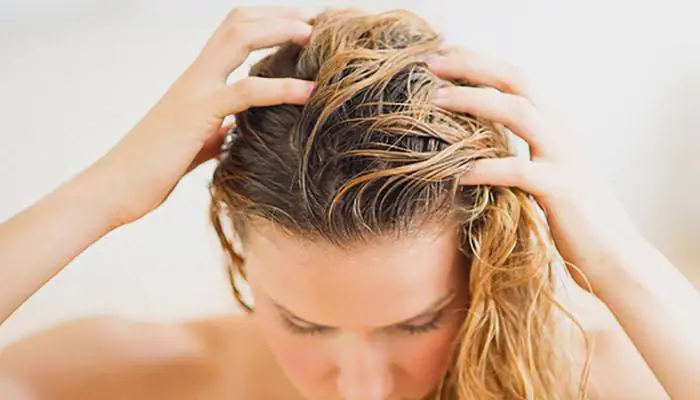
Prevention methods
Knowing the reason why acne occurs on the surface of the head, it is easier to prevent this unpleasant, painful phenomenon. The main axioms for those who suffer from skin inflammation should be:
- proper healthy eating;
- maintaining personal hygiene;
- timely disinfection and disinfection of skin areas at the first appearance of signs of small pimples;
- selection of high-quality cosmetic products;
- a calm lifestyle without stressful situations;
- regular medical examinations by doctors.
Pimples form not only on the face or body, but also on the head in the hair. The most interesting thing is that these rashes appear more in men, and of different ages, and at 18, 30, 40, and 50 years old. They are usually localized on the occipital, scalp, back parts of the head, as well as on the temporal areas.
Despite the fact that pimples on the hair are barely noticeable, and at first glance the problem of their appearance is not as depressing as their appearance on other parts of the body, it can cause a lot of inconvenience for a man. They can itch and itch, and even cause severe pain when scratched.
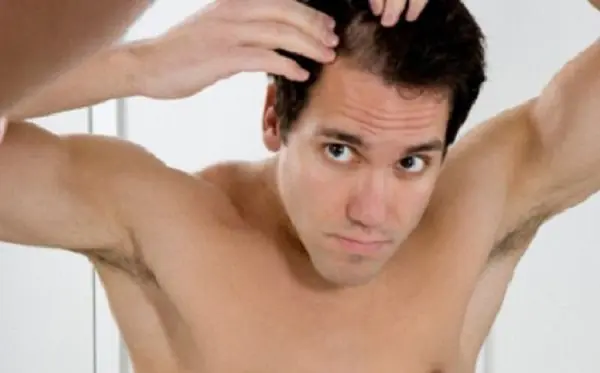
Fortunately, there are many folk remedies that can help get rid of them. And they all do not contain any harsh chemicals or other ingredients that often do more harm to your hair and scalp than good. But first, let's look at what causes acne in the hair and how it forms.
Causes of acne on the head in men
Pimples on the head form in the same way as on the face and other parts of the body. Our skin produces an oily, fatty substance called sebum, which keeps it smooth and naturally hydrated.
Sebum is produced by the sebaceous glands, which are located just under the surface of the skin. It makes its way to her through:
1) hair follicles (as shown in the figure below) or
2) through pores on hairless areas of the skin (for example, on the face).
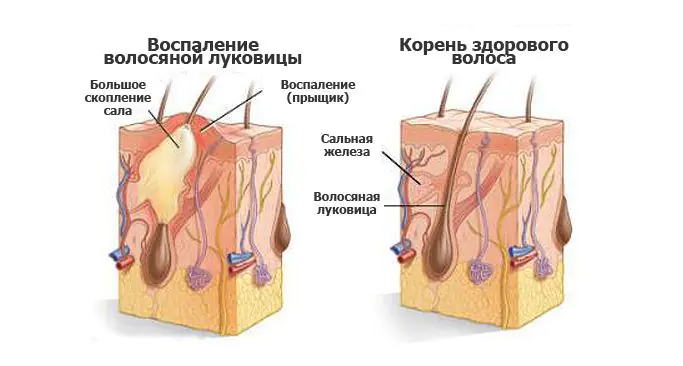
For various reasons, some men produce more sebum. And generally, the more sebum the skin creates, the more oily it becomes, causing acne.
- Hormonal changes are the most common cause of their occurrence on the scalp. For example, they are often observed in teenage boys due to an increase in the production of sex hormones. During this period, there is increased sebum production, causing clogged skin pores. All this increases the risk of acne.
- Using shampoos or other hair products that contain many chemicals and fragrances. Any type of allergy can cause a rash, so it is advisable to do a test to detect an allergic reaction to any cosmetic products.
- Constant mechanical stress: wearing tight hats or the habit of scratching the skin.
Studies show that smokers are more likely to develop acne than non-smokers.
- They can also appear as a result of taking steroid-type medications (anabolics, corticosteroids, etc.).
- Pimples in the hair can also be caused by internal causes, such as immune disorders, digestive or liver problems resulting from the use of antibiotics.
- Eating unhealthy foods that are deficient in nutrients. Carbonated drinks, fried foods, pizza, sweets and alcohol put stress on the liver, the main filter of our body.
- Constipation is one of the most common causes of acne in adults. When the body is overloaded with toxins, it begins to dump waste into the skin, forming skin rashes.
- Other causes of this skin defect can be stress, fatigue and depression.
Treatment of acne in hair with folk remedies
Men can get rid of them using proven remedies that are easy to prepare at home.
Apple vinegar
Apple cider vinegar is one of the most popular folk remedies to help get rid of acne. The malic acid contained in vinegar has disinfecting properties and inhibits the production of sebum. Another benefit of vinegar is that it helps restore the pH balance of the skin, which is necessary to protect it from germs, bacteria and pollution.
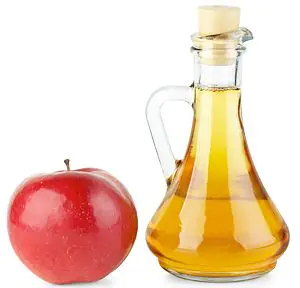
You will need:
- 1/4 cup apple cider vinegar
- 1 tablespoon raw honey (optional)
- 1 glass of water
Preparation:
- Simply mix vinegar, honey and water and massage your scalp with this mixture.
- Leave on for 2-3 minutes, then rinse thoroughly with water.
Aloe vera
In Ayurveda, aloe vera is traditionally used to treat acne because this plant has anti-inflammatory and antibacterial properties. Apart from this, aloe vera nourishes the scalp and hair follicles well, which promotes healthy hair growth and also relieves redness and itching.
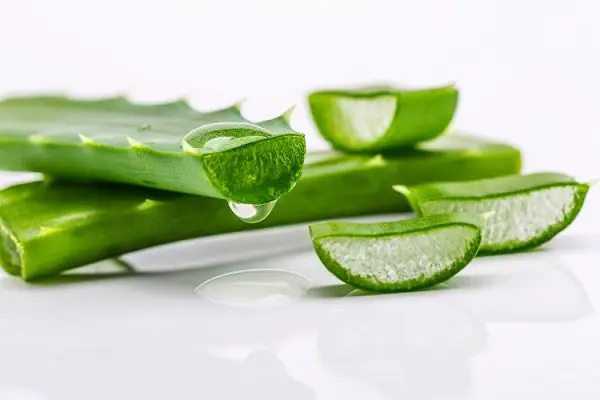
You will need:
Preparation:
- Apply aloe vera juice to the scalp and keep it for 15-30 minutes.
- Then rinse with water.
It will also be beneficial to take 1 teaspoon of aloe vera juice in the morning. It is best to use fresh juice extracted from the leaves. If you buy it from a store, make sure it contains minimal additives.
Tea tree oil
This oil is often used for problematic scalp. In fact, it acts as an antiseptic that disinfects pores and dries out pimples quickly. In addition, it kills bacteria and also relieves itching. Reviews after using the oil are usually positive.
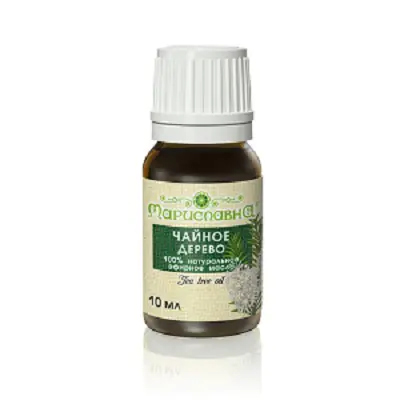
- First, mix 5 drops of tea tree oil with 2-3 tablespoons of olive oil.
- Then apply to your head and massage.
- Leave on for 1-2 hours and rinse off.
- Repeat this procedure once a day.
- When washing your hair, add 2-3 drops of tea tree oil to the shampoo you use.
- Leave this shampoo on for 3-5 minutes, then rinse thoroughly.
Garlic
Garlic effectively treats purulent acne on the scalp. It will also soothe and speed up the healing process.
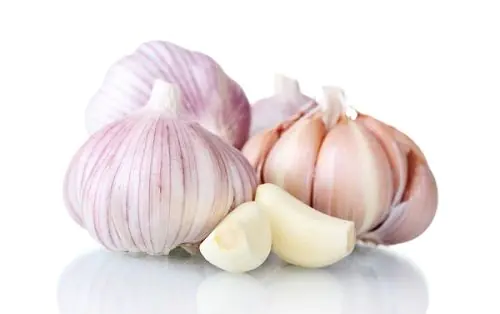
- Pour 3 cups of clean water into a small saucepan and add 4-6 peeled cloves of garlic.
- Boil for 5 minutes and then let cool.
- Wash your hair with the resulting decoction and wait 10 minutes.
- Then rinse with water.
- This process should be repeated once a day.
Honey
Honey is a natural antibiotic, plus it nourishes and moisturizes the skin. Like honey, cinnamon has antimicrobial properties, so it also kills acne-causing bacteria.
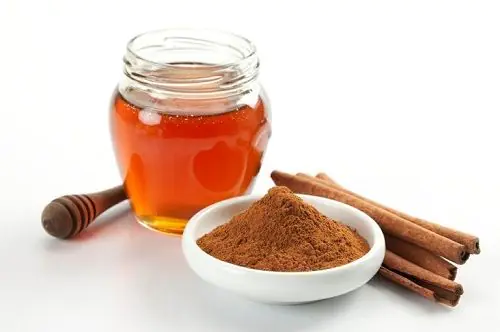
You will need:
- 1/2 teaspoon cinnamon
- 2 tablespoons honey
Preparation:
- Mix honey with cinnamon.
- Apply this mixture on your head for half an hour, then rinse with warm water.
- This remedy will help cure red, painful pimples on the scalp in men.
Sugar and honey scrub
Few people know that regular sugar is also an excellent antiseptic. In earlier times it was used to treat cuts and wounds. A scrub made from sugar and honey gently exfoliates the scalp and helps eliminate pimples in the hair. The sugar particles in this scrub quickly dissolve and therefore do not damage the skin.
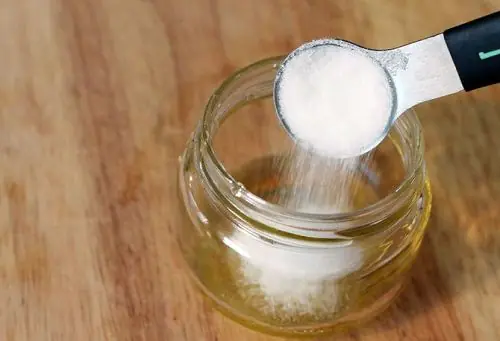
You will need:
- 1 teaspoon sugar
- 2 tablespoons honey
Preparation:
- Mix sugar and honey.
- Gently scrub your skin in a circular motion and leave on for 5 minutes.
- Then rinse with warm water.
Also, don’t forget that eating a healthy, balanced diet plays a very important role in treating acne. External treatment will not solve the problem. It is important to eat foods that heal your skin from the inside.
- Vitamin A is essential for healthy skin. So include sweet potatoes, pumpkin, carrots, broccoli, dark green vegetables, apricot, liver and peppers in your diet.
- Eat more beets, which are an excellent liver cleanser.
- Include more fresh vegetables and fruits in your diet, such as peach, apricot, watermelon, raisins, plums, celery. All are rich in antioxidants, fiber, and essential vitamins and minerals.
- Omega-3 fatty acids help restore and rejuvenate the skin. They contain flax seeds, walnuts, pumpkin seeds, salmon, sardines and mackerel.
- In addition, it is important to consume zinc-containing foods. These include pumpkin seeds, sesame seeds, cashews, peanuts, peas, lamb, turkey, lentils, chickpeas and shrimp.
- It's good to eat probiotics. They have a good effect on the intestinal microflora, improve digestion and improve the absorption of nutrients.
In addition to using various folk remedies, the following simple tips will also help men fight acne and improve their overall health and tone.
- Take a course of vitamins or brewer's yeast. This will help cleanse the body of toxins that cause such skin problems. Never squeeze pimples on your head. This will cause the rash to spread, causing pain and itching.
Use a shampoo that contains salicylic acid and wash your hair at least twice a week. Washing them every day is not recommended as this can cause dry scalp and dandruff.
- Men with oily hair should not use conditioner, as this will only worsen the problem.
- Wash your combs regularly with soapy water.
- Wash your hats often.
- Avoid stressful situations.
- Protect your head from direct sunlight.
- Don't abuse alcohol.
- Avoid eating pepper, hot sauces and spices.
- Reduce your salt and sugar intake.
- Strengthen your immune system.
- Drink 7-8 glasses of water a day, as well as green tea and fresh juices.
Acne on the scalp in men usually appears in a mild form and can be dealt with at home. But if they do not go away for a long time, then you should definitely consult a dermatologist.



